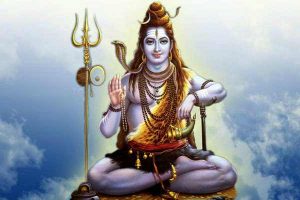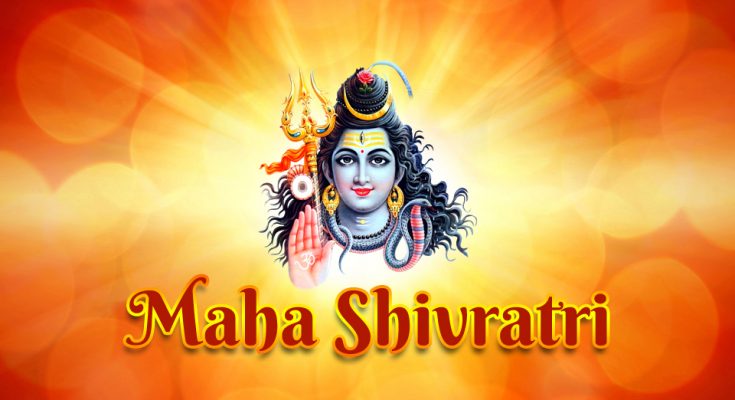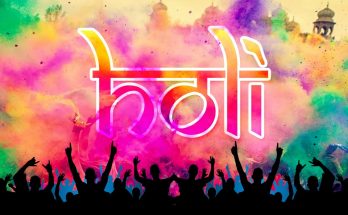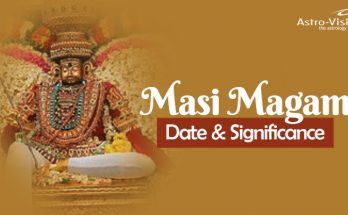Maha Shivaratri
Maha Shivaratri on Thursday, March 11, 2021
Nishita Kaal Puja Time – 11:22 PM to 12:10 AM, Mar 12
Duration – 00 Hours 48 Mins
On 12th Mar, Shivaratri Parana Time – 05:48 AM to 02:45 PM
Ratri First Prahar Puja Time – 05:44 PM to 08:45 PM
Ratri Second Prahar Puja Time – 08:45 PM to 11:46 PM
Ratri Third Prahar Puja Time – 11:46 PM to 02:47 AM, Mar 12
Ratri Fourth Prahar Puja Time – 02:47 AM to 05:48 AM, Mar 12
Chaturdashi Tithi Begins – 02:39 PM on Mar 11, 2021
Chaturdashi Tithi Ends – 03:02 PM on Mar 12, 2021
Maha Shivaratri or simply Shivaratri is one of the most celebrated annual Hindu festivals. The term Maha Shivaratri means ‘Great Night of Shiva’ and the festival marks the convergence of SHIVA and SHAKTHI.
It is celebrated on the Krishna Paksha Trayodashi or Chaturdashi (13th or 14th day of waning phase) of the month Phalguna/Magh/Masi/Kumbham in Hindu calendar which usually befalls on February or March. The day before the new moon of every month is considered Shivaratri, and Maha Shivaratri which befalls at this time of the year is the one with the highest spiritual significance. On this night, it is believed that the northern hemisphere of Earth is positioned in a way that causes a natural upsurge of energies in us. Maha Shivaratri day is celebrated by Hindus all over the world with a variety of rituals. The day will observe a huge influx of devotees in all Shiva temples.
Legends
 The most popular legend is that Maha Shivaratri is the day in which Shiva married Goddess Parvati. Another legend says Lord Shiva performed Tandava – the cosmic dance, on this night. Also, there is a story that associates the day to Samudra Manthan in which Shiva saved the world by consuming the emerged poison and arresting it in his throat through Yogic powers. The day in which Shiva manifested his great effulgent form – Jotirmaya or Jyotirlinga to Lord Vishnu and Lord Brahma, is another story associated with Maha Shivaratri.
The most popular legend is that Maha Shivaratri is the day in which Shiva married Goddess Parvati. Another legend says Lord Shiva performed Tandava – the cosmic dance, on this night. Also, there is a story that associates the day to Samudra Manthan in which Shiva saved the world by consuming the emerged poison and arresting it in his throat through Yogic powers. The day in which Shiva manifested his great effulgent form – Jotirmaya or Jyotirlinga to Lord Vishnu and Lord Brahma, is another story associated with Maha Shivaratri.
There is a different legend for the ascetics who consider Shiva as the Adi Guru from whom the divine knowledge originated. For them, Maha Shivaratri is the night of stillness on which Shiva became one with Mount Kailas.
Observances
Maha Shivaratri observances include poojas, abhisheka, fasting and staying awake at night with prayers and meditations. Devotees observe fast on the day before the Maha Shivaratri night. Some people have food only once while some follow a fruit and milk diet. Some ardent devotees even abstain from consuming water for the entire duration of the fast. People visit Shiva temples and chant the sacred mantra ‘Om Namah Shivaya’. Some people perform the Maha Mrityunjaya Mantra too. The devotees observing fast keep vigil all night, meditating or chanting prayers inside the temples.
Offerings
Abhisheka on Shivalinga is a major ritual on Maha Shivaratri. Abhisheka or bathing the Shivalinga is performed using Milk, Honey, Sugar, Butter, black sesame seeds, Ganga Jal, etc. After this, sandalwood paste and rice are applied to Shivalinga and fresh fruits and flowers are offered. Shiva Purana states the following things to be done on Shivaratri.
- Bathing Shivalinga with water, milk, honey, and bel leaves which symbolize purification of the soul
- Applying vermillion or kumkum which signifies virtue
- Offering fruits which signify longevity and gratification of desires
- Burning of incense symbolizing wealth;
- The lighting of lamps which signify the attainment of knowledge
- Betel leaves marking satisfaction with worldly pleasures
Significance
On Maha Shivaratri day, the planetary positions evoke the spiritual energies and help a person rise to the spiritual level. The benefits of mantras such as Maha Mrityunjaya Mantra increases and the religious penances including Yoga and meditation get more effective. Devotees who strictly observe fasting and other penances are believed to get Moksha or liberation from the cycle of birth and death.
Maha Shivaratri Vrat or Fast is believed to be very powerful which helps a person to attain control over worldly pleasures and temptations. The material pleasures and temptations are forces that bother humans a lot. By worshiping Lord Shiva and observing Maha Shivaratri fast for the entire night, one can have control over the negative thoughts like anger, lust, greed, etc. Maha Shivaratri is the occasion in which nature pushes us towards the spiritual peak. The tradition of observing festival night-long and staying awake is to allow this flow of energy to pass through our spine.
Yogic Tradition
Even modern science has reached a point which states ‘everything we see and experience as matter is different manifestations of one energy’. Yoga and meditation are paths to experience this omnipresent energy of oneness. The word Shiva means ‘that which is not’. The universe itself is a vast emptiness that holds and keeps the galaxies apart. This unbounded emptiness is what referred to as Shiva.
Maha Shivaratri is special for the possibilities it gives to a spiritual seeker. It lets one understand his limitedness and to experience the omnipresent source of creation present in everyone. Lord Mahadev is believed to be the supreme power. He is regarded as the destroyer and also, as the most compassionate; the modern science proves ‘everything comes from nothing and goes back to nothing’.
Previous: Vasant Panchami 2020










I am big piligrim of lord Shiva from my childhood itself. This article given me more knowledge about the festival before Maha Shivaratri festival 2020. Kepp continue on writing such a great articles. Thank you